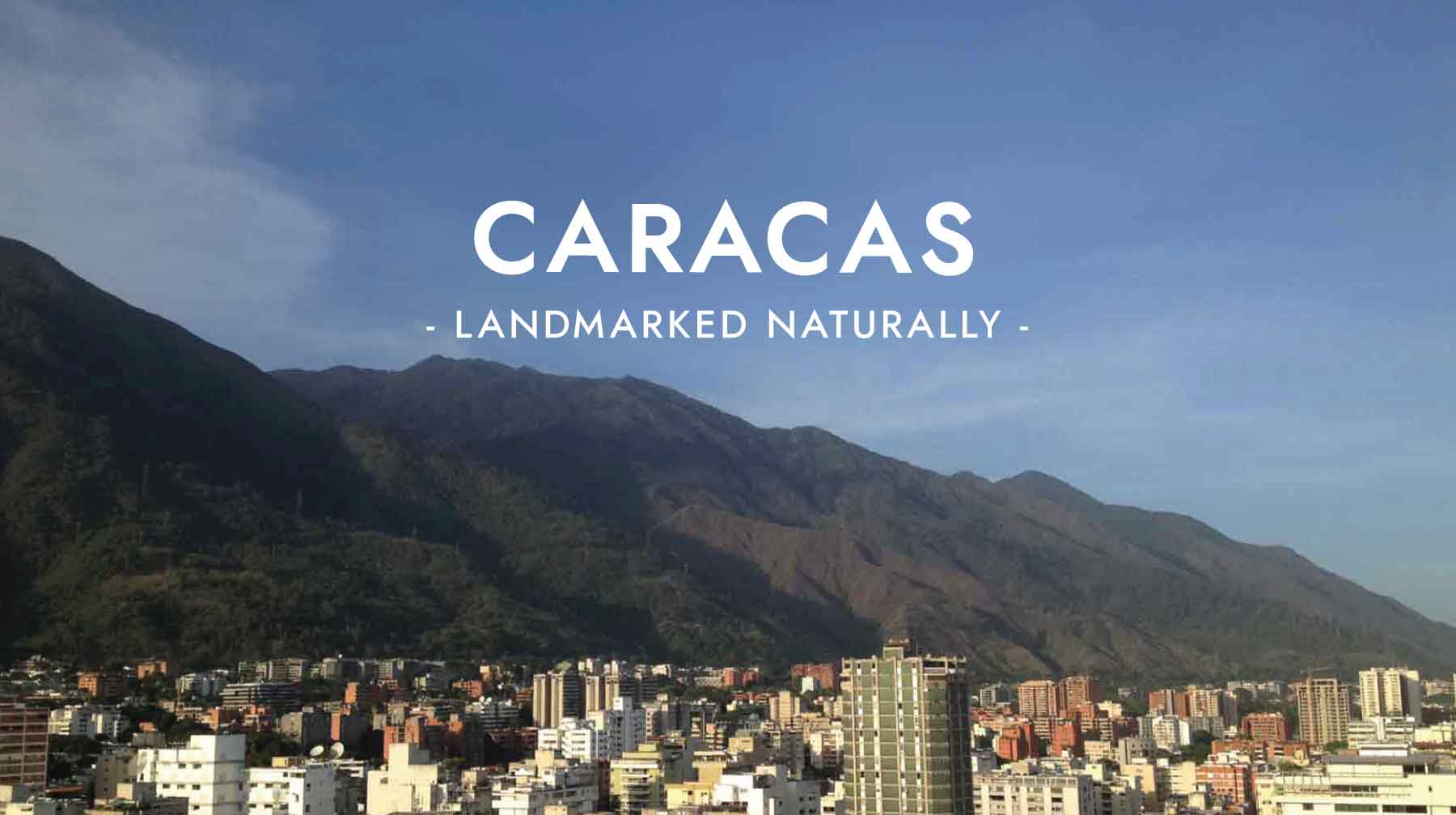
Caracas, capital city of Venezuela, is a vibrant metropolis located at the center of the Americas. Its metropolitan area is separated from the Caribbean Sea by a majestic mountain chain, El Ávila, which has represented the city since its foundation in 1567, with its very characteristic silhouette.
Caracas’s irregular topography creates a magical scenario, that allows the city to offer a variety of activities for locals and visitors to experience alike while easily enjoying the best of its exotic urban nature.
Enjoying its architecture, gastronomy, modern art, or its privileged weather, exuberant tropical vegetation and nearby beaches, is all part of this amazing experience. This minimap aims to honour those amazing or unique places that can be found in the northernmost capital of South America.
For your Caracas journey to be a success please remember these tips: 1. Dress simply (don’t wear jewellery and don’t use your smartphone while on the street); 2. Caracas is mainly a daytime city; 3. Take only official hotel or shopping mall taxis.
Edited by Rodrigo Capriles and illustrated by Andrea Stern.
Created with the support of TePaseo & Neko Films.
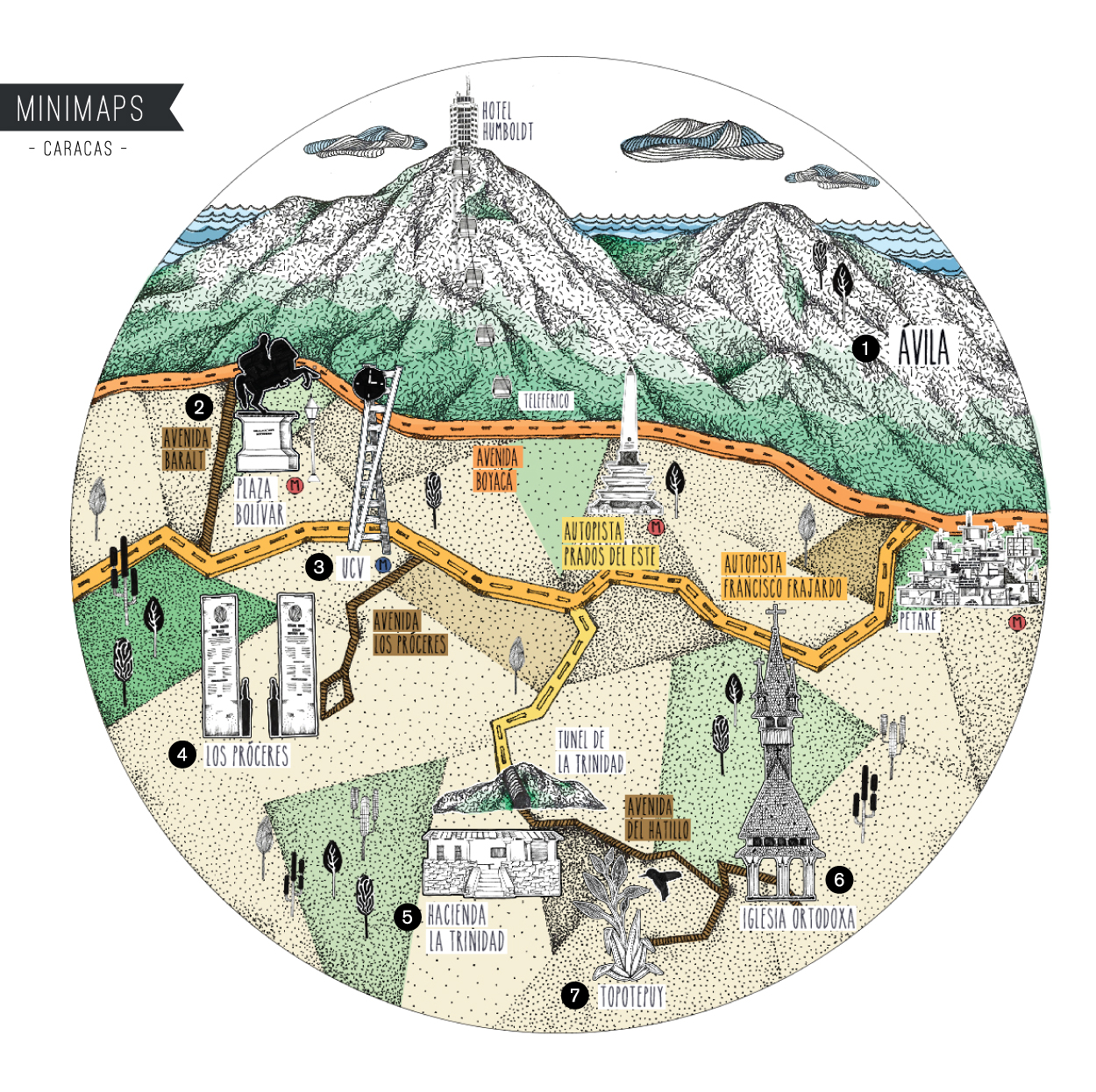
Free to download, ready to print!
.
.
1. Waraira Repano National Park (El Ávila)
Waraira Repano in ancient Indian Caribe language means big mountain chain, and this is the magnificent mountain that contains and dominates the city from its north. Numerous trekking routes with all levels of difficulty can be found there. If hiking is not your thing, on Sundays you can go to the Cota Mil, Caracas’s northern highway, which is closed for traffic from 6h30 to 12h30 and open for walkers, joggers, bikers, skaters and even ephemeral street artists that want to enjoy the mountain from its foothills and the views of the city from there. Depending on the activity you wish to perform, beware of the lane you choose: for jogging and walking, use extremes only; for biking, stay in the West- East direction; and for skating, use the East- West direction. You can also get to the top of the mountain by funicular (cable railway), and while you’re standing in one of its peaks, you will be in a middle point between the Caribbean Sea and the northernmost capital of South America. The funicular closes Mondays, but it’s open weekdays from 12 – 21h, and weekends starting from 9h.
2. Bolívar Square (Downtown Caracas)
La Plaza Bolívar is the central square of the foundational city of Caracas in 1567. From its four corners the first streets were projected following a classic Spanish square pattern. In the late 1930’s, this development configuration was abandoned because the city’s uncontrollable growth required big scale solutions. Plaza Bolívar is a remaining example of the Spanish colonial city that characterised Caracas until almost mid 19th century. Go ahead and while you’re there visit Caracas’s Metropolitan Cathedral, the Sacred Museum of Art and the Municipal Council Building (Caracas Museum). Nearby, Simón Bolívar’s birthplace is located, have a look at the central patio distribution of the typical Venezuelan colonial house, and get in touch with Latin American history through the life of one of its most important figures. Mind that most of the mentioned heritage sites are closed on Sundays or Mondays, and they open after 9h30, the rest of the days. It’s advisable to visit the center during daytime, and get there using the metro station “Capitolio” (red line).
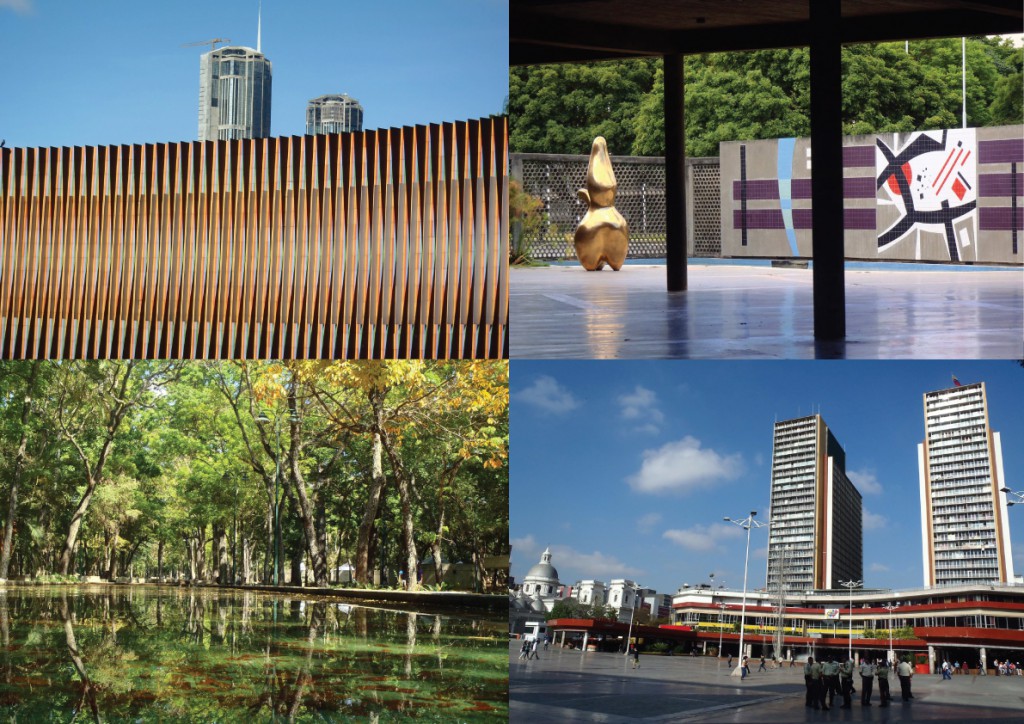
3. Universidad Central de Venezuela
Caracas’s Ciudad Universitaria (University City) is a world class open-air museum, designed by Carlos Raúl Villanueva in collaboration with multiple Venezuelan and international remarkable artists. They mixed modern architecture with a great number of murals, stained glasses and sculptures. This mixture makes this Uni one of the best examples in the world to appreciate the “synthesis of the major arts”, a place where painting, sculpture and architecture come together harmonically to stimulate our senses and inspire us. The Aula Magna, the main event auditorium, has one of the best acoustics in the world, due to the joint work of Alexander Calder and Bolt, Beranek & Newman sound engineering firm. To visit the auditorium, check for the programming, and experience how sculpture can turn music into something more sublime. It’s recommendable to visit the University during daytime and get there using the metro station “Ciudad Universitaria” (Dark blue line).
4. Paseo Los Próceres
Paseo Los Próceres is a monumental complex that integrates important military spaces, through a boulevard that mixes sculptures, fountains, pathways and amazing tropical gardens. It’s dedicated to the heroes that contributed to the foundation of the republics of Venezuela, Colombia, Ecuador, Perú and Bolivia, which come together with characters of the Greek mythology to recreate that moment when history and glory touch the mundane. The space is complete with a big lagoon, which is accessed through an iron gate that has a military checkpoint, located in the eastern side of the great monoliths that crown the end of the monumental walkway. It’s opened every day, except for the days when public or political events take place.

5. Hacienda La Trinidad
Hacienda La Trinidad is one of the last spaces that used to be the main social and economic institution since colonial times: Haciendas. Before the explosive growth of the city in the late 1930’s, most of it used to be plantations, reason why the lasting farm houses in the city speak for tradition, economic activity and social status since colonial times. The old buildings of this farm were preserved and transformed into a private cultural space, where bookstores, show rooms, healthy food, mind-body treatments, open-air art exhibitions and beautiful green spaces melt with Venezuelan history. Open Tuesday thru Saturday, from 11 to 18h, and Sundays from 11 to 16h.
6. Saint Constantine and Saint Helen Orthodox Church
The Orthodox Church of Saint Constantine and Saint Helen is a Romanian peculiar present given by the Orthodox community and the Romanian Government to the city of Caracas. It was built without nails, using only wooden pieces of oak and fir, perfectly assembled following ancestral German traditions. Only 25 temples of this kind exists worldwide, being only two of them outside Romania (Chicago and Caracas). Caracas held the first Romanian community of South America, probably that’s why it was honoured with an almost unknown world marvel. The temple opens on Friday, from 13 – 18h, and on weekends, from 11 – 18h. Masses on Sundays from 11 – 12h.
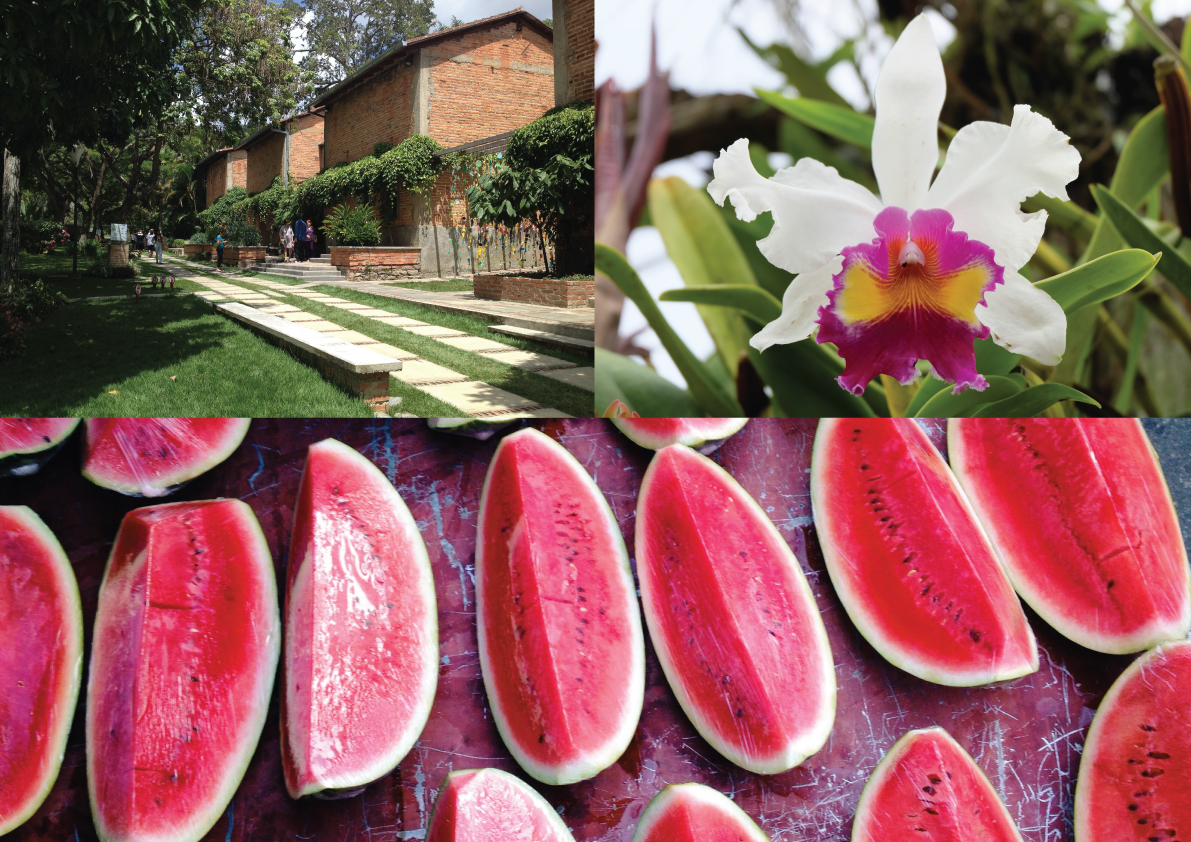
7. Topotepuy Ecological Gardens
Topotepuy is a 4-hectare private park, that combine different gardens with a local reserve of cloud forest. This place belonged to William Phelps and Katheleen Deery, a couple that shared the passion for Venezuela, its birds and its nature. During their multiple expeditions they created the most important ornithology register made in the country. In 1959, they acquired this 4-hectares paradise for birds and wildlife observation, leaving a piece of their legacy throughout this tropical vegetation museum. Caracas is a worldwide privileged city for bird watching, and Topotepuy is the ideal place to experience it. They’re open to the public on weekends and you need to book a spot before going, so check the website before planning your visit!
.
Are you ready to visit this tropical, peculiar, chaotic and beautiful city?
Download your minimap here!
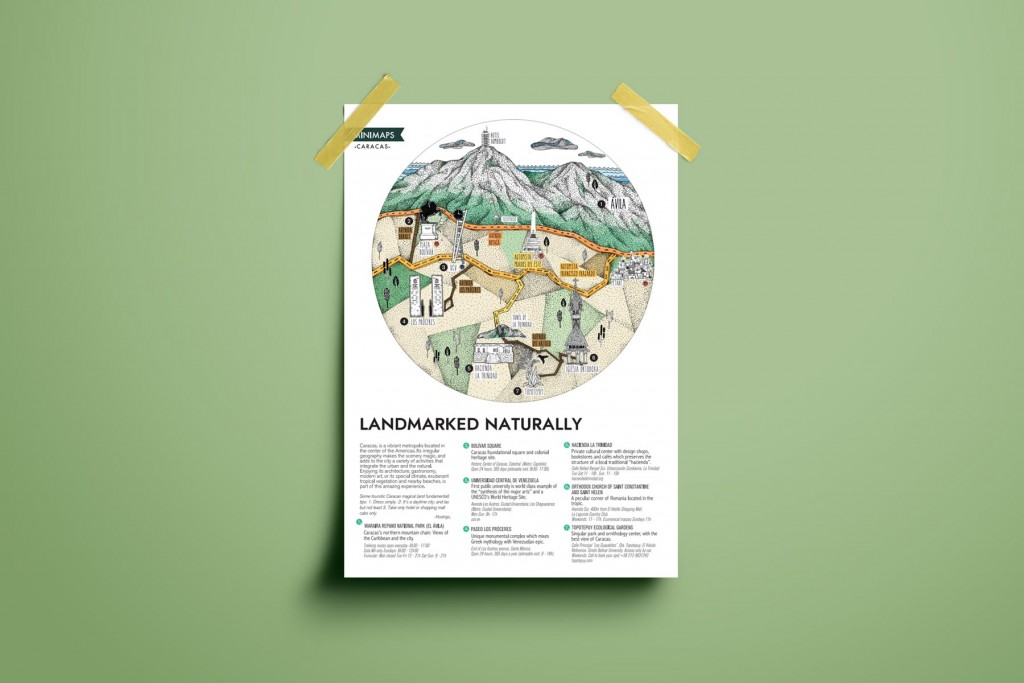
To share your photos with other minimappers, please use this hashtag #superminimaps in Twitter and Instagram!
♥



